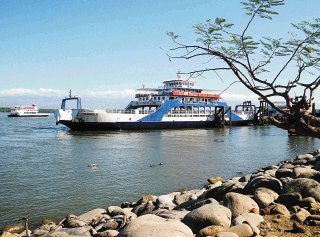Costa Rica’s national parks stand as a testament to the nation’s remarkable legacy, representing a truly awe-inspiring aspect of the country’s natural heritage. In this small yet biodiverse nation, a remarkable achievement unfolds, with over one-quarter of its land meticulously preserved and protected within the boundaries of these national parks. Within these sanctuaries, the rich tapestry of Costa Rica’s natural world, characterized by towering trees, vibrant flowers, intricate vines, and a myriad of captivating critters, unfolds as iconic symbols of the country’s commitment to environmental conservation.
The verdant landscapes and diverse ecosystems within these protected areas not only contribute to the nation’s ecological health but also serve as a source of immense pride for Costa Ricans. The national parks encapsulate the essence of Costa Rica’s unparalleled biodiversity, providing refuge to a vast array of plant and animal species that have become emblematic of the nation’s commitment to sustainable stewardship. As living showcases of ecological balance, these parks invite exploration and contemplation, offering visitors and locals alike an immersive experience in the heart of Costa Rica’s natural wonders.
In the verdant canopies, vibrant hues of flora paint a picture of biodiversity unique to Costa Rica, while the intricate dance of critters on the forest floor adds a layer of fascination. The intertwining vines and the resilient trees, bearing witness to the passage of time, stand as silent sentinels of the country’s dedication to preserving its environmental treasures. In essence, Costa Rica’s national parks encapsulate the spirit of harmony between humanity and nature, embodying a legacy that transcends generations and echoes the profound connection between a nation and its natural heritage.

The inception of the national park system in 1984 marked a pivotal moment in Costa Rica’s commitment to environmental conservation. These protected areas, including national parks, wildlife refuges, and other pristine landscapes, collectively constitute the National System of Conservation Areas (SINAC), overseen by the Environment Ministry.
The latest data from the Costa Rica Tourism Board unveils the nation’s top five most frequented national parks this year, showcasing the diverse natural wonders that draw visitors from around the globe.
1. Manuel Antonio National Park (Annual Visitors: 360,176)
Situated on the Pacific Coast, Manuel Antonio National Park beckons travelers with its alluring beaches and tropical shorelines. The area boasts lush vegetation that spills onto pristine sands, providing a serene environment for a refreshing swim. With average temperatures in the 70s throughout the year, Manuel Antonio’s beaches offer a pleasant retreat. The park’s rainforest, home to unique flora and fauna, makes it an ideal habitat for white-faced and squirrel monkeys, a variety of birds, and sloths. Strict conservation measures, such as the prohibition of shore and sports fishing, contribute to the preservation of the delicate biodiversity within the park.
2. Poás Volcano National Park (Annual Visitors: 339,542)
Just 30 minutes from San Jose in the Alajuela province, Poás Volcano, reaching an elevation of 8,885 feet, stands as one of Costa Rica’s largest and most active volcanoes. Visitors are treated to breathtaking views, and the volcano’s acidic lake, Laguna Caliente, undergoes mesmerizing color changes. The park’s protected wildlife area, spanning from 4,000 to 8,860 feet above sea level, shelters diverse flora and fauna, offering sightings of 79 bird species, including the quetzal and emerald toucanet. The park’s unique plant species, such as the “Sombrilla del pobre,” thrive in the humid climate, providing visitors with opportunities to experience nature up close.
3. Irazú Volcano National Park (Annual Visitors: 139,862)
A mere 1.5-hour drive from San Jose, Irazú Volcano, the highest volcano in Costa Rica at 11,260 feet, captivates visitors with its multiple craters and stunning views. The park encompasses 5,705 acres of pristine mountain forest, showcasing primary, secondary, and cloud forests. Although wildlife visibility is affected by volcanic activity, the park remains home to small animals such as coyotes, squirrels, rabbits, owls, and woodpeckers. On clear days, the summit provides panoramic views of both the Atlantic and Pacific oceans.
4. Marino Ballena National Park (Annual Visitors: 143,861)
Established in 1990, Marino Ballena National Park, named after migrating humpback whales, stands as one of Costa Rica’s newest national parks. Committed to marine ecosystem conservation, the park houses some of the largest coral formations on the Pacific side of Central America. One of its attractions, the “Passage of Moses,” becomes visible during low tide, creating a captivating natural spectacle. The park’s northern end, Uvita, offers pristine beaches with crystal-clear blue waters, and activities such as horseback riding and snorkeling. Strict conservation measures prohibit fishing in the protected areas.
5. Tortuguero National Park (Annual Visitors: 57,658)
Nestled in the Limon province, Tortuguero National Park, meaning “turtle catcher,” safeguards endangered sea turtles that nest along the Caribbean Coast from July to October. The park’s 46,815 acres encompass vital wildlife habitats, providing protection for 13 of the country’s 16 endangered species, including jaguars, tapirs, and monkeys. The region’s high rainfall and the convergence of freshwater and seawater create a biodiverse haven, making the park one of the most diverse ecosystems in Costa Rica. Visitors can witness the nesting of four sea turtle species: green turtles, hawksbills, loggerheads, and giant leatherbacks.


